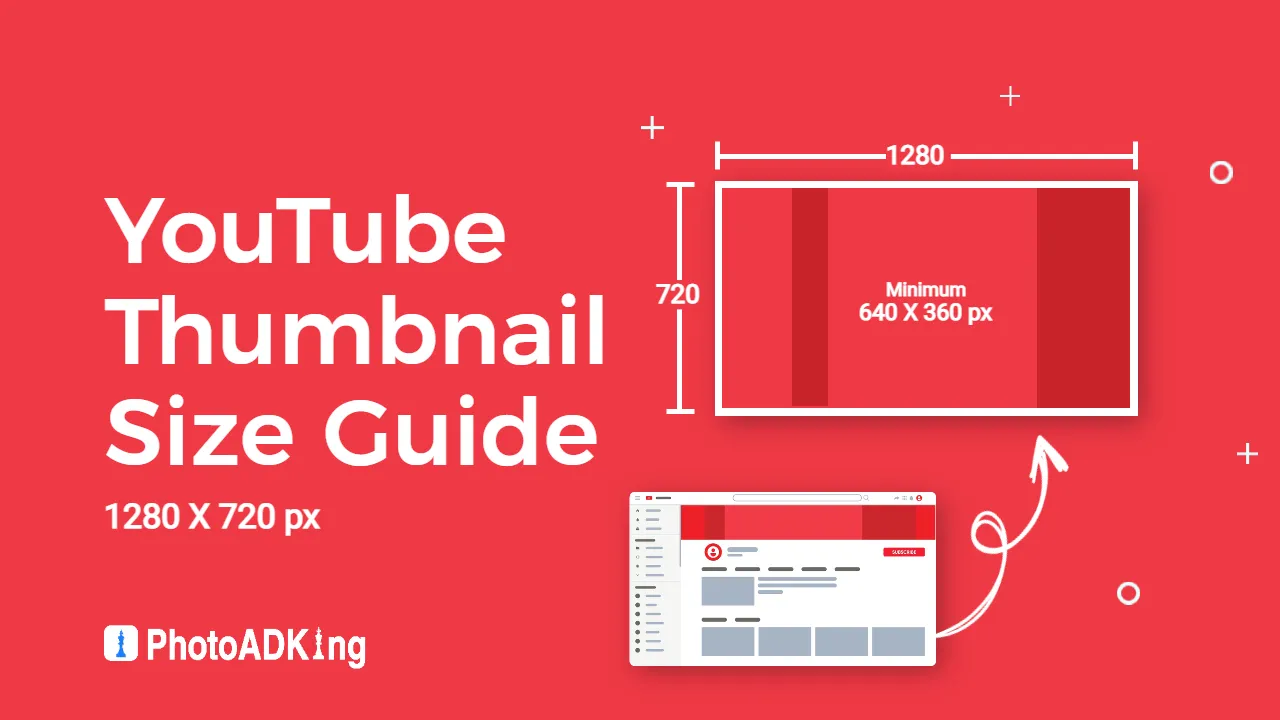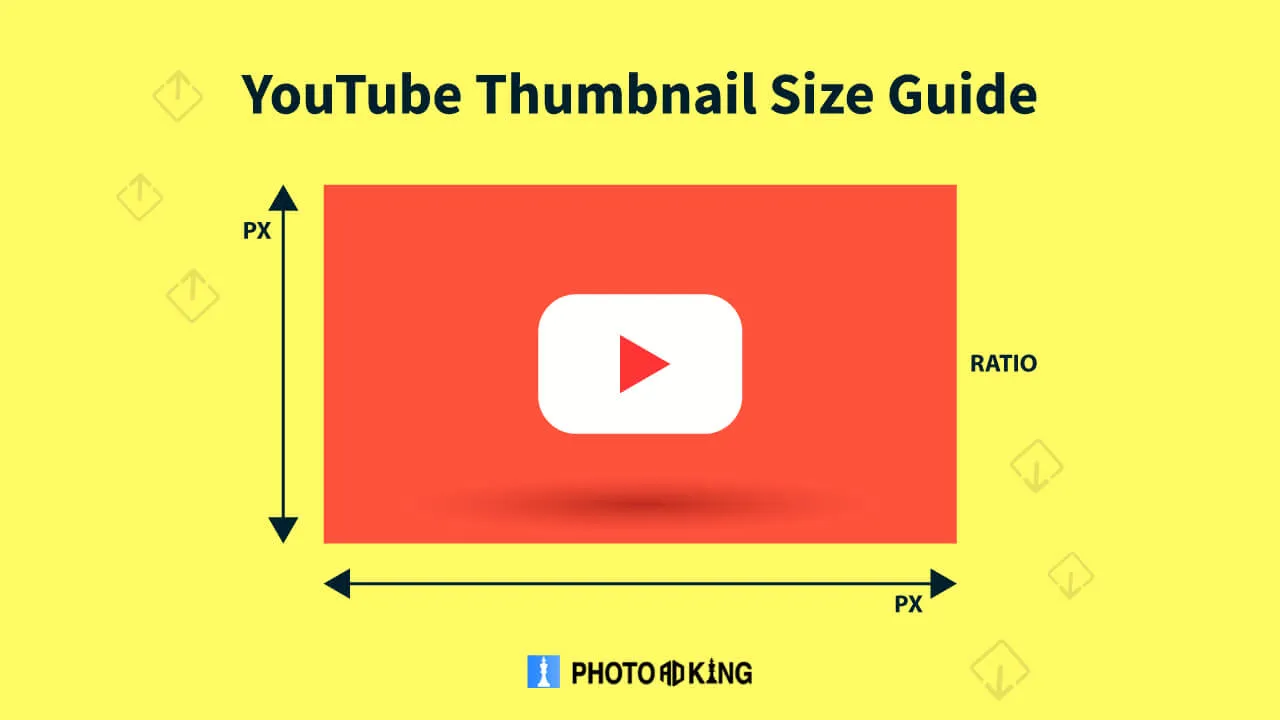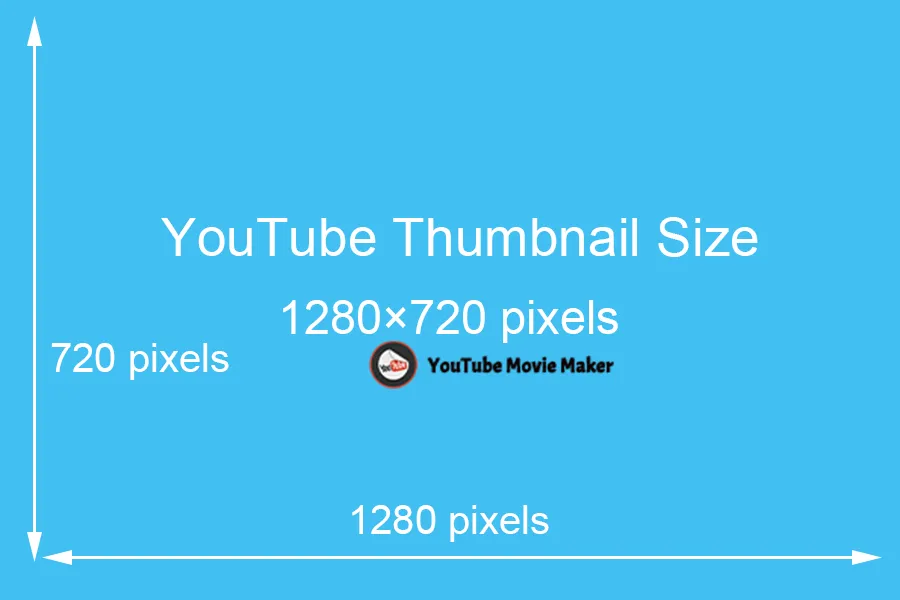YouTube thumbnails play a crucial role in catching a viewer's attention and enticing them to click on your video. Think of a thumbnail as the cover of a book; it needs to be visually appealing and communicate the essence of the content inside. In a sea of videos, an eye-catching thumbnail can make all the difference between a viewer scrolling past your content or clicking to watch. But what exactly makes a thumbnail effective? Well, it starts with understanding the right size and dimensions to ensure your thumbnail looks fantastic on any device.
Importance of an Optimized Thumbnail Size

Optimizing your YouTube thumbnail size is essential for several reasons. Let’s dive into why this aspect should never be overlooked:
- Visual Clarity: A well-sized thumbnail ensures that your images and text remain clear and legible, even when viewed on smaller screens like smartphones. A blurry or pixelated thumbnail can turn potential viewers away.
- Consistent Branding: Using a standard size for your thumbnails helps maintain a consistent look across your channel. This familiarity can enhance your brand identity and make your content instantly recognizable.
- Improved Click-Through Rate (CTR): Thumbnails that are optimized for size and design are more likely to attract clicks. A higher CTR means more views, which can positively impact your video's ranking on YouTube.
- Compatibility Across Devices: YouTube users access content on various devices, from desktops to mobile phones. An optimized thumbnail size ensures a great viewing experience, regardless of screen size.
To put things into perspective, the recommended size for YouTube thumbnails is 1280 x 720 pixels with a minimum width of 640 pixels. This aspect ratio of 16:9 ensures that your thumbnail looks perfect on all platforms, so don’t skimp on this detail!
| Thumbnail Size | Recommended Dimensions | Aspect Ratio |
|---|---|---|
| Standard Thumbnail | 1280 x 720 pixels | 16:9 |
| Minimum Width | 640 pixels | N/A |
In summary, taking the time to optimize your YouTube thumbnail size is a small yet mighty step towards elevating your content and attracting more viewers!
Also Read This: How to Effectively Message a Recruiter on LinkedIn
Recommended Thumbnail Dimensions

When it comes to YouTube thumbnails, size really does matter! A well-crafted thumbnail can grab attention and dramatically increase your video’s click-through rate. So, what are the ideal dimensions you should aim for? Let’s break it down.
The recommended size for your YouTube thumbnail is 1280 pixels wide by 720 pixels tall. This size ensures that your thumbnail looks crisp and clear across various devices, including smartphones, tablets, and desktop computers. Here’s a handy table to summarize:
| Dimension | Width (pixels) | Height (pixels) |
|---|---|---|
| Recommended Size | 1280 | 720 |
| Minimum Size | 640 | 360 |
| Maximum File Size | 2 MB | |
It's also essential to note that your thumbnail should be in a 16:9 aspect ratio, which is the standard for most YouTube videos. This ratio helps your thumbnail appear well-proportioned on the platform, avoiding any awkward cropping. Plus, don’t forget to save your thumbnail in a high-quality format, such as .JPG, .GIF, .BMP, or .PNG. Keeping these dimensions and specifications in mind will set you up for success!
Also Read This: How Many Employees Does Shutterstock Have and What It Means for You
Aspect Ratio and Its Significance

Now that we’ve nailed down the dimensions, let’s chat about aspect ratio. You might be wondering, “What’s the big deal?” Well, the aspect ratio is a crucial factor that influences how your thumbnail appears across different devices and platforms.
The aspect ratio of 16:9 is the most widely used for video content, and it’s also the default ratio for YouTube. Here’s why it matters:
- Consistency: Using the standard aspect ratio ensures your thumbnail looks consistent with other videos, making it more recognizable to viewers.
- Visibility: A well-proportioned thumbnail will display without being cropped awkwardly, helping you maintain the integrity of your design.
- Engagement: Thumbnails that adhere to the standard ratio are more likely to attract clicks, as viewers are accustomed to seeing them in that format.
In summary, sticking to a 16:9 aspect ratio is not just a suggestion; it's a best practice for maximizing your video’s appeal. So, before you hit that upload button, ensure your thumbnail checks all the boxes for dimensions and aspect ratio. Happy creating!
Also Read This: How to Grow Your Behance
How to Create Eye-Catching Thumbnails
Creating eye-catching thumbnails is essential for grabbing viewers' attention and boosting your video’s click-through rate. Here are some tips to help you design thumbnails that stand out:
- Use Bold Text: Make sure your text is large and easy to read. Use contrasting colors to ensure it pops against the background. Aim for a maximum of 6-7 words to keep it concise.
- High-Quality Images: Always use high-resolution images. A blurry thumbnail can deter viewers from clicking on your video. Opt for images that are relevant to your content.
- Consistent Branding: Develop a consistent style across all your thumbnails. This includes using specific fonts, colors, and logos that reflect your brand. This helps in creating a recognizable look.
- Emotional Appeal: Thumbnails that evoke emotions tend to perform better. Use expressive faces or dramatic imagery to connect with potential viewers.
- Incorporate a Call to Action: Sometimes, adding phrases like “Watch Now” or “Don’t Miss This” can create a sense of urgency that encourages clicks.
Remember, your thumbnail is often the first impression potential viewers get of your video, so take the time to make it appealing!
Also Read This: How to Sell My Photos on Getty Images and Reach a Global Audience
Tools for Designing YouTube Thumbnails
There are several tools available that can help you create stunning YouTube thumbnails. Here’s a quick rundown of some of the best options:
| Tool | Features | Best For |
|---|---|---|
| Canva | Templates, drag-and-drop interface, customization options | Beginners and non-designers |
| Adobe Spark | Professional quality, integration with Adobe suite, templates | Users familiar with Adobe products |
| Snappa | Easy to use, pre-sized templates, stock photos | Quick designs with no prior experience |
| Fotor | Photo editing tools, templates, and effects | Users wanting more photo editing capabilities |
| PicMonkey | Graphic design and photo editing features | Those who want a blend of design and editing |
Each of these tools has unique features that can cater to different skill levels and design needs. Try a few and see which one feels right for you!
Also Read This: How to Make Adorable Teddy Bear Cookies
7. Testing and Analyzing Thumbnail Performance
When it comes to YouTube thumbnails, creating the perfect one is just the beginning. Once you've designed your thumbnail and uploaded it, the next step is to test and analyze its performance. This is crucial because it helps you understand what works and what doesn’t for your audience. Here are some tips on how to effectively test and analyze your thumbnail performance:
- Use YouTube Analytics: YouTube offers a robust analytics tool that tracks how your videos and thumbnails are performing. Pay attention to metrics like click-through rate (CTR) and average view duration. A high CTR indicates that your thumbnail is appealing to viewers.
- A/B Testing: If you're really committed to finding the best thumbnail, consider A/B testing. Create two different thumbnails for the same video and see which one performs better over a set period. This can give you a clearer understanding of what elements resonate with your audience.
- Audience Feedback: Don't underestimate the power of your community! Ask your viewers for their opinions on your thumbnails through comments or polls. Their feedback can provide insights you might not have considered.
- Iterate and Improve: Based on your findings, don’t hesitate to revise your thumbnails. Sometimes, a small tweak in color or text can make a significant difference in performance.
In summary, testing and analyzing your thumbnail performance isn't just a one-time deal; it's an ongoing process that can lead to better engagement and more views over time. So, keep an eye on your analytics and don’t be afraid to make changes!
8. Conclusion and Best Practices
To wrap things up, crafting the perfect YouTube thumbnail is an essential step in maximizing your video's reach and engagement. Remember, your thumbnail is often the first impression potential viewers have of your content, so it needs to be eye-catching and informative. Here are some best practices to keep in mind:
- Stick to the Right Dimensions: Always use the recommended size of 1280 x 720 pixels for your thumbnails to ensure clarity across devices.
- Be Consistent: Develop a consistent style for your thumbnails. This could include using the same fonts, colors, or design elements that reflect your brand.
- Keep It Simple: Avoid clutter. A clean design with a focal point is more likely to draw attention than a busy thumbnail.
- Incorporate Text Wisely: Use concise, bold text that complements the imagery. Make sure it’s legible even on smaller screens.
- Stay Relevant: Ensure your thumbnail accurately represents the content of your video. Misleading thumbnails may attract clicks initially but can lead to viewer disappointment.
By following these best practices, you’re not just creating a thumbnail; you’re crafting a tool that can significantly enhance your video’s performance. So, get creative, analyze your results, and keep refining your approach—your audience will thank you!